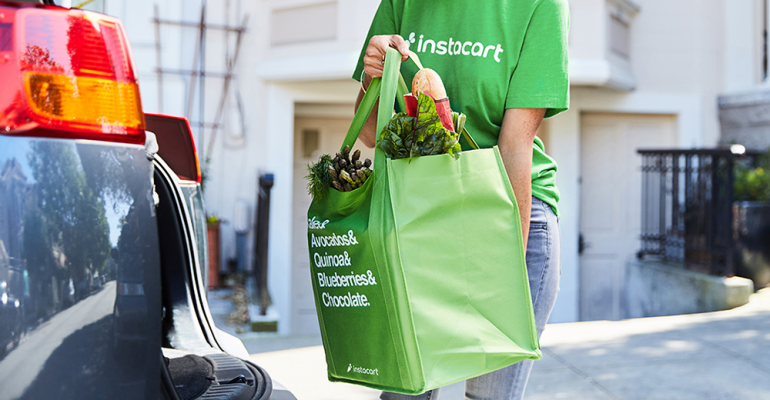Cash Assistance Programs in Indiana
Cash Assistance Programs in the State of Indiana
Are you in need of a cash assistance? If you are residing in Indiana, the following programs are available for you. You can browse the list below and select which one would be the most appropriate according to your needs.
Temporary Assistance for Needy Families (TANF)
TANF is a program that offers financial aid to needy individuals and families with children under the age of 18 years. This program aims to grant these people a chance to achieve economic self-sufficiency through employment services, job training, cash support, and other assistance. The TANF in Indiana is administered by the Family and Social Services Administration (FSSA) through the Division of Family Resources (DFR).
Each TANF participant in Indiana may be eligible for monetary support to help cover their basic requirements such as utility bills, housing, and food. The amount of cash aid supplied changes depending on the size, earnings, and other circumstances of their family.
It should be noted, however, that TANF is a limited-time program. This means that the beneficiaries are supposed to work toward autonomy. Indiana, like many other states, has developed rules to encourage TANF participants to work and become self-sufficient.
Eligibility
To be capable of receiving TANF assistance in Indiana, the candidates need to fulfill the following requirements:
Income
The income restrictions are different based on the size and makeup of the household. Earned and unearned income, such as salaries, support for children, and supplemental welfare payments (SSI), are all factored into the income restrictions.
The number of assets or resources that a family can have while still qualifying for TANF is limited. Certain assets, such as a principal dwelling and personal items, are normally not taken into account.
Occupation specifications
Most adult TANF participants are required to engage in work-related activities like employment, job seeking, education, or job training.
Citizenship and residence requirements
TANF applicants must be US citizens or eligible immigrants who live in Indiana.
How Much Money Can I Get?
The benefit amount provided through TANF varies depending on factors such as household size, income, and expenses. In Indiana, the maximum net monthly TANF benefit for a family of three is $288.
How to Apply for TANF in Indiana
You can apply for TANF through the online portal of the Indiana Family and Social Services Administration (FSSA). You can also contact the local county Division of Family Resources (DFR) office by calling or texting the following number:
- 1-800-457-8283
- 1-855-463-5292
Supplemental Nutrition Assistance Program (SNAP)
�
The Indiana Family and Social Services Administration (FSSA) administers the SNAP benefit, also known as the ‘Food Stamp Program.’ The SNAP supports qualified families and people with low incomes through its fundings for purchasing foodstuffs.
The beneficiaries are allowed to use the SNAP benefits to purchase a variety of food items, including fruits, vegetables, bread, dairy products, meat, fish, and non-alcoholic beverages. However, remember that items such as tobacco, alcohol, vitamins, and pet food are generally not included in the funds that you may receive through the SNAP.
Eligibility
To be eligible for SNAP benefits in Indiana, you must meet the following requirements:
Income and resource requirements
The specific eligibility criteria are determined by factors such as household size, income, assets, and expenses. For specifics, visit the SNAP Eligibility table here to check how much is the monthly net limit for each household. You may also note from the site that additional income allowances are offered for larger households.
How to Apply for SNAP in Indiana
If you believe you are eligible for SNAP benefits in Indiana, you can apply through the following methods:
- Apply online through the FSSA website. You will be required to complete the application form with details and provide the specified documents.
- Visit your local Division of Family Resources (DFR) office in person.
- You can also call DFR toll-free contact on 800-403-0864
Once your application has been submitted, the FSSA will review it. If approved, you will receive an Electronic Benefits Transfer (EBT) card. This card is the one you will use to purchase eligible food items at authorized retailers, grocery stores, and supermarkets.
The Low-Income Home Energy Assistance Program (LIHEAP)
This government-supported program assists low-income families with their housing energy costs. LIHEAP provides financial assistance to qualified individuals and families to help them cover the costs of conditioning and heating their homes.
Eligibility
To be eligible, an individual or a family must be:
- A resident of Indiana
- Accountable for paying utility or heating services
Another factor is that the LIHEAP eligibility in Indiana is also determined by revenue, size of household, and other variables. Priority is given to families with disadvantaged members, such as young kids, elderly individuals, or those with impairments, as seen on the table below:
Size of the household: | 1 | 2 | 3 | 4 | 5 |
Income ($) per year (before taxes): | 21,869 | 29,579 | 37,289 | 44,998 | 52,800 |
Types of Assistance
LIHEAP is a unique program that has different types of assistance, which a family or a person can apply for, such as:
Heating Management (Energy Assistance Program)
During the winter months, the Energy Support Program assists eligible households with their heating expenses. It makes a one-time payment to the utility provider or the fuel distributor on the household's behalf.
Note: LIHEAP also provides crisis assistance to homes that are experiencing an air conditioning or cooling disaster. This service is given to prevent utility disconnection or to reinstate the service if it has already been disconnected.
Summer Cooling Program
This program in Indiana offers summer cooling aid in addition to heat assistance. This program assists qualified homes with cooling expenses such as cooling systems or fans during the hot summer months.
How to Apply for LIHEAP
You may apply through the following:
- Fill out an application form and submit any required evidence, such as confirmation of income, identity, and utility bills.
- Applications can be filed online, by email, or in person at Community Action Agencies in your community.
- You can contact the program by calling 317-232-7777, and the local service provider at 211.
How Much Money Can I Get?
The amount of LIHEAP assistance differs according to aspects such as the income of the household, energy spending, and available money. The amounts for both heating and cooling support benefits may also differ. For a complete breakdown, see the table here.
Child Care and Development Fund (CCDF)
The Indiana government also allocates funds to help with child care. The CCDF provides low-income families with access to inexpensive childcare services. It supports parents in gaining access to childcare programs, assuring children's well-being and development while parents work or pursue school or training.
The CCDF is ran through the Indiana FSSA to enhance childcare affordability, availability, and quality.
The services are as follows:
Family Child Care Subsidy
Under the CCDF, qualified families can receive a childcare subsidy to help cover the expense of childcare amenities. The reimbursement is given directly to the household's preferred child care provider, including licensed child care centers, registered ministries, licensed family child care homes, or relatives providing care.
The state has resources and initiatives to help childcare providers meet quality standards, such as training and ongoing education.
Child Care Finder
Indiana provides an online activity known as "Child Care Finder" to assist households in locating and selecting childcare providers who match their individual needs. This resource lists licensed child care centers, registered ministries, licensed family child care homes, and alternative alternatives to child care.
Due to the long waiting list, it might take up to two years for parents or families to receive the funding.
Eligibility
The following are the qualifications to receive a cash assistance under the Child Care and Development Fund:
- Be a foster care who is employed, receiving training, or attending school.
- You are someone's parent who works, attends school, or has a TANF/IMPACT referral.
- The household’s income must be within the guidelines that can be found here.
- Can provide identifications for all family members.
- You must be an authorized citizen of the county where you want to ask for help.
- Children seeking care must be under the age of 13, or if the child is above the age of 13, they must have documented special needs until they reach the age of 18 years old.
- The child receiving aid must be a resident of the United States or an eligible lawful immigrant.
How to Apply for CCDF in Indiana
There are three ways to apply for CCDF in Indiana. These are:
- Applying online throughEarly Ed Connect.
- Visiting the Children’s Bureau’s website here in Columbus, Indiana.
- Calling them at the 812-314-2212 for phone users, or the toll-free hotline at 866-287-2420.
Seeking Care
The government in Indiana has a lot of programs that aims to support individuals or families until they reach better situations. For the complete list of cash assistance� programs, visit the Indiana government’s official website here.

 2022-07-07
2022-07-07
 2022-10-04
2022-10-04